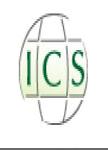版权所有:内蒙古大学图书馆 技术提供:维普资讯• 智图
内蒙古自治区呼和浩特市赛罕区大学西街235号 邮编: 010021

作者机构:Institute for Process Control Robotics University of Karlsruhe (TH) Engler-Bunte-Ring 8 76131 Karlsruhe Germany Department of Oral Maxillofacial Surgery University of Heidelberg Im Neuenheimer Feld 400 69120 Heidelberg Germany
出 版 物:《International Congress Series》 (Int. Congr. Ser.)
年 卷 期:2003年第1256卷第C期
页 面:752-759页
学科分类:1002[医学-临床医学] 07[理学] 08[工学]
基 金:Belgian Programme on Interuniversity Poles of Attraction(IUAP-4/2 & 24) Belgian State, Prime Minister’s Office—Federal Office for Scientific, Technical and Cultural Affairs Mathematical Engineering for Information and Communication Systems Technology European Commission(ERBFMRXCT970160) Fonds De La Recherche Scientifique - FNRS Fonds Wetenschappelijk Onderzoek(G.0360.98) KU Leuven Vlaamse regering(MEFISTO-666)
主 题:Automated planning Elastic deformation Registration Surgical planning
摘 要:In the frame of the collaborative research centre “Computer and Sensor Aided Surgery (SFB 414), we developed a planning environment called “KasOp, which supports the surgeon to define osteotomies in cranio–maxillo-facial surgery. However, planning of surgical interventions still requires a lot of user interaction in order to precisely define cutting trajectories. The presented approach in this paper uses rigid and elastic deformation of polygonal surfaces in order to align pathologically shaped patient bone surfaces and predefined reference bone surfaces of a physiological data set of same age and sex. By doing this, we are able to transfer a trajectory predefined on the physiological data set onto the patient without any user interaction. This speeds up the planning process, as the surgeon simply needs to modify a preplanned trajectory instead of creating a new one. Moreover, the surgeon receives an impression of how the patient should look like, and regions with the largest deviations to the physiological shape can be identified. © 2003, Elsevier Science B.V. and CARS. All rights reserved.